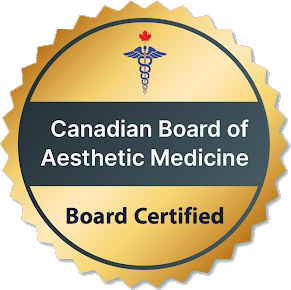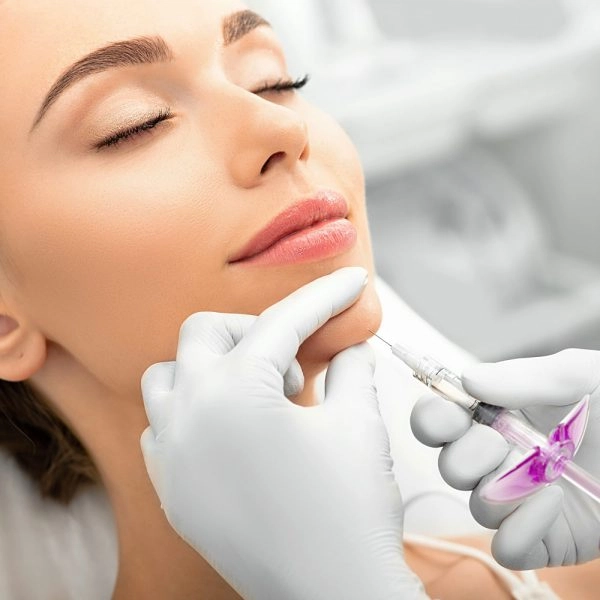Transform Your Look with Dermal Fillers
At Beauty Aesthetics, we understand that your face is a prominent part of your identity and often the first feature others notice. Our skilled beauty experts are here to help you keep looking young and make your natural beauty shine even more. Come with us on this journey to boost your special style with dermal fillers near me and feel more confident.


What is Dermal Fillers?
Facial injections in aesthetics are treatments where special substances are injected into the skin of the face to improve its appearance. They can help smooth wrinkles, fill in areas where the skin has lost volume, and enhance certain features.
What areas can we treat with Dermal Fillers?

Forehead
To reduce static forehead lines, creases, and wrinkles.

Between the Eyebrows
For frown lines, often called "11" lines or Glabella.

Around the Eyes
To treat crow’s feet (lines that appear when you smile or squint).

Around the Mouth
For nasolabial folds (lines from the nose to the mouth corners) and marionette lines (lines from the mouth corners downwards).

Lips
Enhance the lips' shape & volume, correct asymmetry in the lips, and define the shape of the cupid’s bow.

Chin
To smooth out lines, and chin wrinkles, mental crease, chin apex, pre-jowl area, and mandibular body and angle.

Cheeks
To add volume to cheekbones and provide structural support to the lateral and mid-cheek region.

Nose Sides
To soften "bunny lines," which are wrinkles on the nose.

Jawline
To define the jaw or reduce sagging
What are Dermal Fillers?
Dermal fillers are a type of cosmetic treatment used to restore volume and fullness to the skin, diminish facial lines, and enhance facial contours. They are injectable substances and have become a popular choice for facial rejuvenation without the need for surgery. Dermal fillers offer a minimally invasive option for those seeking to diminish signs of aging or enhance facial features. these fillers are administered in a simple outpatient procedure with local anesthesia to minimize discomfort. The treatment takes about an hour. After the procedure, patients might experience some swelling, bruising, and slight discomfort for up to a week. Follow-up injections are often needed to achieve the best results. They work by filling in scar depressions, reducing wrinkles, and restoring volume lost due to aging.
How do dermal fillers work?
Facial fillers help increase hyaluronic acid in the skin, making it look younger by reducing wrinkles and adding fullness. This gives the skin a smoother and more natural look. Dermal filler treatments are a quick, non-surgical way to enhance your appearance and can often be done in just one quick visit to the office, making them great for people with busy lifestyle.

What To Expect At Dermal Filler Appointment
Consultation
Your appointment will likely start with a consultation. The practitioner will discuss your aesthetic goals, review your medical history, and explain the options available. They'll also address any questions or concerns you might have.
Facial Assessment and Mapping
The practitioner will examine your facial structure, skin tone, and the areas that need treatment. They might mark the specific sites on your face where the fillers will be injected.
Cleaning and Anesthetizing
The targeted areas will be cleaned, and a topical anesthetic or numbing cream may be applied to minimize discomfort.
The Injection Process
Using fine needles or cannulas, the filler will be injected into the predetermined areas. You might feel a slight prick or pressure during this process. The practitioner may gently massage the areas to evenly distribute the filler.
Immediate Aftercare
Post-injection, you'll receive instructions on how to care for the treated areas. This may include avoiding strenuous exercise, excessive sun or heat exposure, and makeup for a certain period.
Possible Side Effects
You might experience some swelling, redness, or bruising at the injection sites, which typically subsides within a few days.
Seeing Results
The results of dermal fillers are often visible immediately after the treatment, with the full effect becoming apparent within a week or two.
Follow-Up Appointments
Depending on the type of filler used and your body's response, you may need follow-up treatments to maintain the desired results.
TAKE YOUR FIRST STEP
Schedule Your Consultation For Dermal Fillers In Toronto
Reach out and speak with a member of our dedicated staff, and take those first exciting steps on your empowering cosmetic journey today.
Hear from Our Satisfied Clients
Contact Us Today For Dermal Fillers In Toronto
Schedule your free consultation and let our team guide you through the cost and treatment options. We can help you achieve your desired results while ensuring a positive and transparent experience.
Looking for an answer?
Frequently Asked Questions For Dermal Fillers
What Are Facial Injections?
Facial injections are minimally invasive treatments used to reduce the appearance of wrinkles, restore facial volume, and enhance facial features. Common types include Botox/Dysport (neuromodulators) and dermal fillers.
How Do Botox/Dysport Work?
Botox and Dysport are types of neuromodulators that temporarily relax facial muscles, reducing the appearance of lines and wrinkles. Commonly used for forehead lines, crow’s feet, and frown lines.
What Are Dermal Fillers and How Do They Work?
Dermal fillers are gel-like substances injected beneath the skin to restore lost volume, smooth lines, soften creases, or enhance facial contours. Often made from hyaluronic acid, a substance naturally found in the skin.
Are Facial Injections Painful?
Most clients report only minor discomfort during the injection process, similar to a quick pinch. We can use a topical anesthetic to minimize pain.
How Long Do The Results Last?
The longevity of results varies. Botox/Dysport typically last 3-6 months, while the effects of dermal fillers can last anywhere from 6 months to over a year, depending on the type of filler and the area treated.
Is There Any Downtime After Treatment?
There is usually no significant downtime. You might experience minor swelling or bruising at the injection sites, but these typically resolve within a few days.


